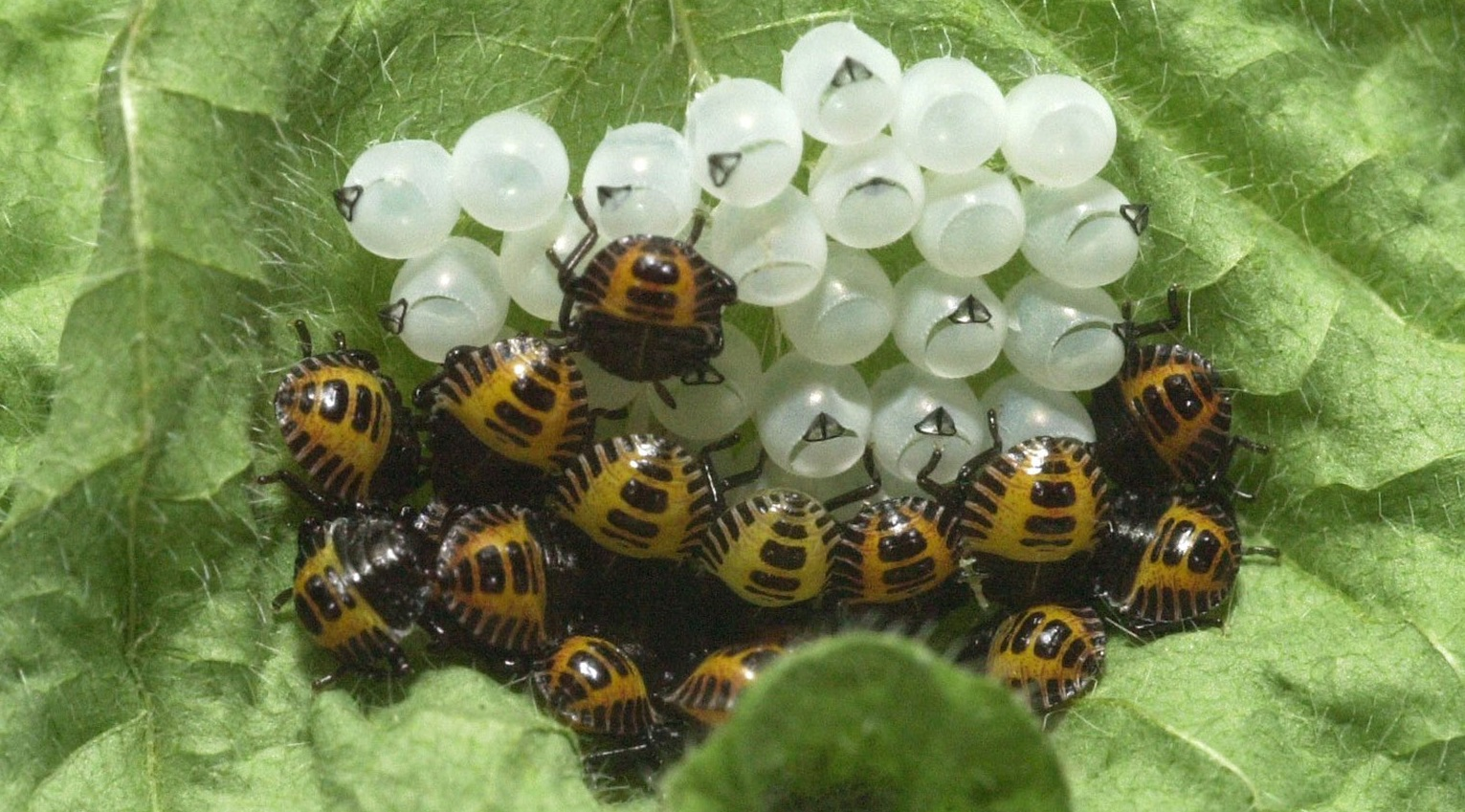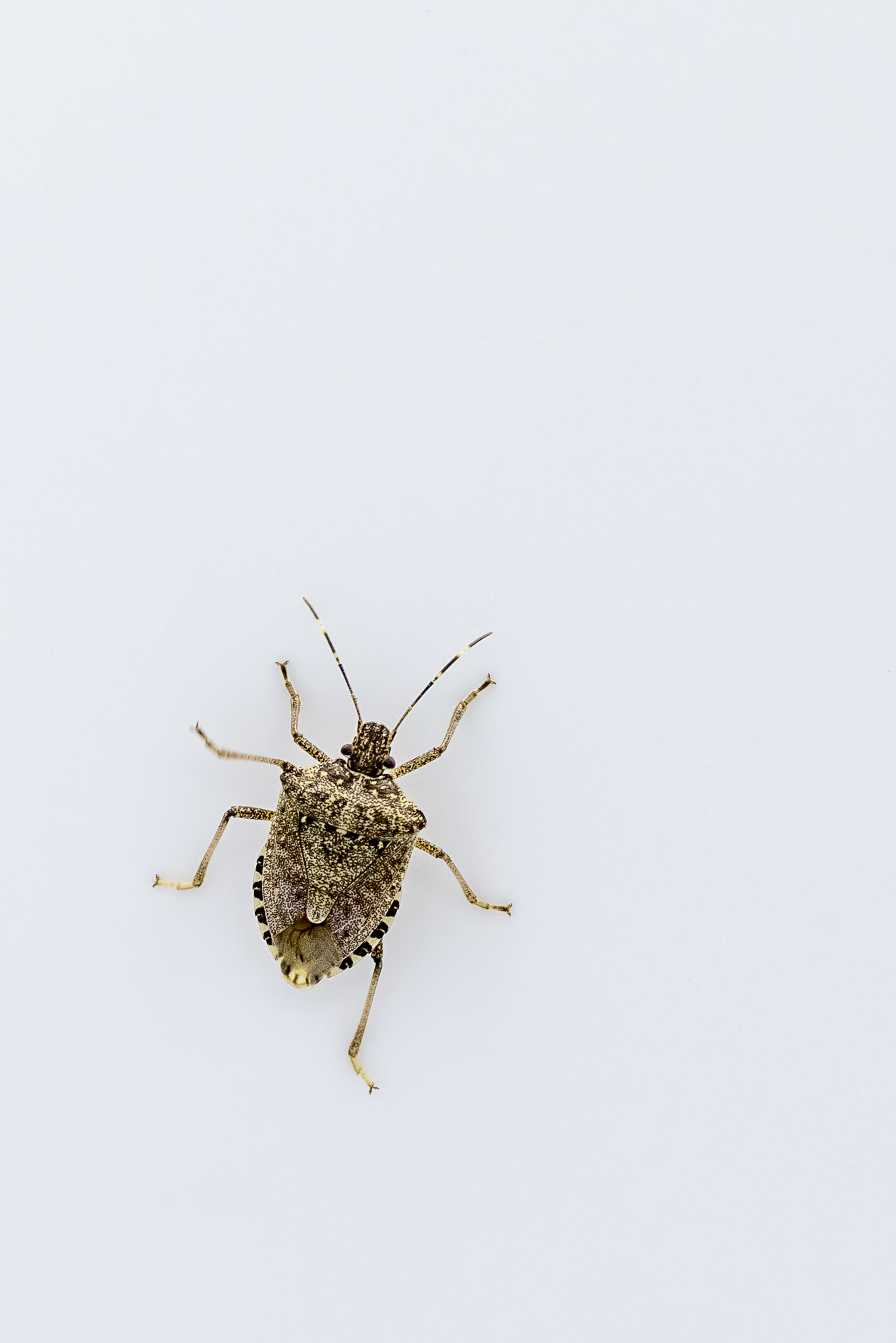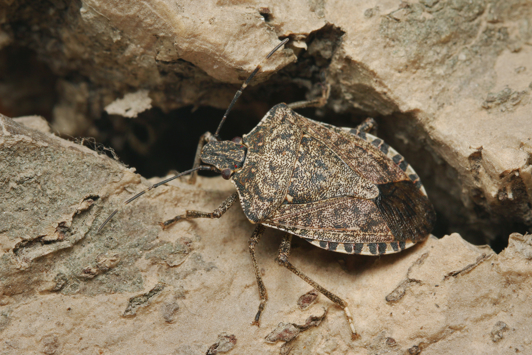
Brown marmorated stink bug is a declared pest in WA
Brown marmorated stink bug is not known to occur in Australia and must be reported to the department if found or suspected to be present in WA.
This pest is not found in Australia but is well known to stow away in cargo from the northern hemisphere, so early detection is critical to protect WA horticulture.
About brown marmorated stink bug
Brown marmorated stink bug (Halyomorpha halys) is a mottle brown coloured, shield shaped stink bug.
BMSB causes major damage to fruit and vegetable crops and ornamental plants, reducing both yield and marketability.
BMSB is not a risk to human health but is regarded a nuisance pest. It has a foul-smelling odour when crushed or disturbed.
It is not found in Australia but its tendency to stow aware in cargo, freight, electronics, and luggage from the northern hemisphere makes it a high biosecurity risk.
BMSB has a very large host range, including fruit, vegetables and ornamental plants and trees.
It feeds on more than 300 plant species, including sweet corn, tree nuts and fruits such as apples, peaches, figs, mulberries, citrus and persimmons.
Ornamental trees such as Tree of Heaven, Princess tree, English holly, Magnolia and Chinese pistachio have been observed to be preferential hosts for BMSB.
Overseas, red sorghum and sunflower have been used as trap crops as they are tall, brightly coloured and have seeds that are a good protein source.
BMSB can be confused with several other brown coloured stink bugs that are present in Australia, except they are larger and have distinctive markings.
- 12–17mm long, mottle brown coloured, shield shaped.
- Distinctive black and white banding around the outer edge of the abdomen
- White bands on its antennae.
- Five nymph stages that range from less than 3mm to 12mm long.
- Young nymphs have a dark head with an orange abdomen, and red with black stripes around the outer edges and down the centre.
- Older nymphs are similar to the adult, but darker, with some small lateral spines around the front edge of the body, and banding on the legs and antennae beginning to appear.
- Eggs are laid in clusters of 25 to 30 on the underside of leaves.
- Eggs are light green to white in colour, and barrel-shaped.

- Look for unusual aggregations of stink bugs in or on buildings when the weather cools down.
- They can be found in large numbers seeking shelter from cold weather in crevices or protected areas in homes, buildings, vehicles and machinery.
- They are attracted to light, and may be found in areas that are well lit at night.
- Visually inspect host plants, particularly the underside of leaves.
- They emit a foul odour when disturbed.

BMSB causes major damage to fruit and vegetable crops and ornamental plants. Once established in a cropping situation, effective control is difficult.
Bugs pierce the outer surface of fruit, injecting saliva and sucking out juices. This causes dimpling of the fruit's surface and rotting and corking inside the fruit.
If on fruits produced for juice extraction, such as grapes or citrus, the insect may taint the entire batch of juice with a bad taste and smell, making it unsuitable for sale.
In maize and soybeans, feeding damage can stop seed development. Damage to nuts include nut abortion, shrivelled kernels and kernel necrosis. The BMSB juvenile or nymphal stages cause the most damage.
Overseas, BMSB is having a significant impact on agriculture and as a nuisance pest, due to its habit of seeking shelter during winter in large numbers inside buildings and vehicles.
BMSB is native to eastern Asia (China, Japan and Taiwan) but was introduced to North America in the mid-1990s and more recently to Europe, where it is rapidly becoming a serious pest.
BMSB opportunistically uses cargo containers and freight vehicles to hitchhike across continents and oceans. In recent years, due to its spread overseas, there have been increasing detections in Australia.
BMSB has the ability to survive in cargo for long periods by remaining in a dormant state. Additionally, its ability to fly and feed on a wide range of plant hosts enables it to spread rapidly when it is introduced to new areas.
BMSB are more frequently found on goods arriving in Australia between September and April, coinciding with late autumn and winter in the northern hemisphere.
If brown marmorated stink bugs were present in Australia, we could expect it to typically find shelter from April and emerge again from late September.
Actions to control and minimise the spread
Anyone who works around or receives imported goods should look out for BMSB and report anything suspicious. This includes port workers and anyone working in and around freight, transport, warehouses and industrial areas.
Businesses that deal with imported goods typically stored outside should be particularly vigilant, such as car dealerships, machinery and equipment distributors, and building or garden product suppliers.
BMSB will stow away inside shipping containers, and they can be found within the goods in the container, including boxes and packaging.
If you find dead or live bugs suspected of being BMSB, take immediate action:
- Don’t remove the contents of the container or package. Shut the doors and reseal.
- Don’t allow the container to be moved – especially to an area outside if it’s in a warehouse.
- Collect any dead or live specimens so our entomologists can confirm the species.
- Any live bugs should be held in a container that prevents them from escaping.
-
Learn how to make a trap for Brown marmorated stink bugpdf (2.29 MB)
WA’s pest freedom from brown marmorated stink bug is supported by general and specific surveillance (notably by port and warehouse workers), including specific federal import measures and requirements to prevent its entry.
Legal duty to report
Brown marmorated stink bug is a declared pest in WA.
Halyomorpha halys (Stål, 1855) is a declared pest under section 12 of the Biosecurity and Agriculture Management Act 2007.
This means that any person who finds or suspects the presence of brown marmorated stink bug must report it to DPIRD.

